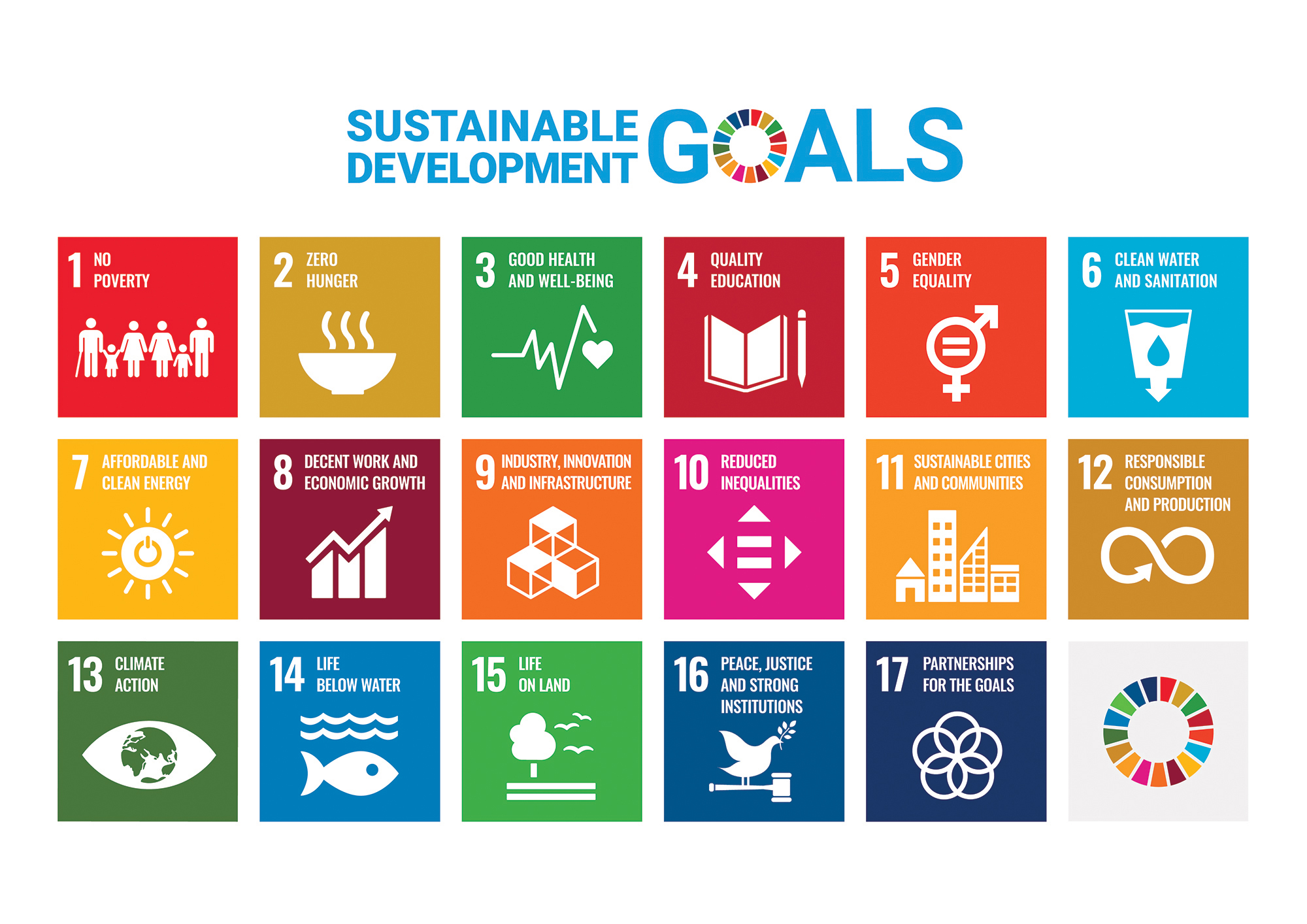Artificial intelligence (AI), often portrayed as a futuristic concept straight out of science fiction, is rapidly transforming our world in ways that extend far beyond flashy gadgets and virtual assistants. While AI’s capabilities are still unfolding, its potential as a catalyst for achieving a more sustainable and equitable future is undeniable. In the face of pressing global challenges, such as climate change, poverty, and inequality, AI is emerging as a powerful tool to accelerate progress towards the United Nations’ Sustainable Development Goals (SDGs) and Environmental, Social, and Governance (ESG) targets. From revolutionizing healthcare to optimizing resource management, AI is not merely a technological advancement; it’s a driving force for positive change.
A prime example of AI’s real-world impact is Moderna’s groundbreaking development of COVID-19 vaccines. By harnessing the power of AI algorithms and robotic technologies, Moderna was able to expedite the vaccine development process, ultimately saving countless lives and contributing to SDG 3: Good Health and Well-being. This is just one glimpse into the transformative potential of AI, which is poised to reshape industries, drive innovation, and tackle some of the world’s most pressing challenges.
AI: A Champion for Sustainable Development
AI is not merely confined to the realm of technological innovation; it’s proving to be a game-changer in tackling some of the world’s most pressing challenges outlined in the Sustainable Development Goals (SDGs).
Source: https://education.nationalgeographic.org/resource/sustainable-development-goals/
Healthcare (SDG 3: Good Health and Well-being): AI is revolutionizing healthcare by enabling faster and more accurate disease detection. Machine learning algorithms can analyze medical images, such as X-rays and MRIs, to identify early signs of diseases like cancer, often with greater precision than human experts. AI is also accelerating drug discovery by sifting through vast databases of molecular structures to identify potential drug candidates, significantly reducing the time and cost associated with traditional drug development. Furthermore, AI-powered personalized medicine is tailoring treatments to individual patients based on their genetic makeup, lifestyle, and other factors, leading to more effective and targeted therapies.
Climate Action (SDG 13): The fight against climate change is being bolstered by AI’s ability to analyze massive amounts of climate data. AI algorithms can identify patterns and trends in this data, enabling scientists to better understand the complex dynamics of climate change and develop more accurate models for predicting extreme weather events like hurricanes and droughts. This information is crucial for disaster preparedness and mitigation efforts. Additionally, AI is optimizing energy use in buildings and cities by analyzing energy consumption patterns and adjusting systems accordingly, leading to significant reductions in carbon emissions.
Agriculture (SDG 2: Zero Hunger & SDG 15: Life on Land): AI is transforming agriculture through precision farming techniques. AI-powered drones and sensors can monitor crop health, soil conditions, and weather patterns in real-time. This data allows farmers to make informed decisions about irrigation, fertilization, and pest control, optimizing resource use and minimizing environmental impact. By increasing crop yields and reducing waste, AI is playing a crucial role in ensuring food security for a growing global population while promoting sustainable land management practices.
AI: The Maestro of ESG Performance
AI is not only transforming industries and tackling global challenges, but it’s also proving to be a maestro in the realm of Environmental, Social, and Governance (ESG) performance.
Data Analysis: ESG initiatives often involve collecting and analyzing vast amounts of data related to a company’s environmental impact, social responsibility, and governance practices. AI excels at sifting through this data, identifying patterns, and extracting valuable insights that would be difficult, if not impossible, for humans to uncover manually. For example, AI can analyze energy consumption data to pinpoint inefficiencies, identify opportunities for emissions reduction, or assess the effectiveness of sustainability programs. These data-driven insights enable companies to make informed decisions that can improve their ESG performance and drive positive change.
Risk Assessment: AI is a powerful tool for identifying and mitigating ESG risks. By analyzing a wide range of data sources, including news articles, social media posts, and regulatory filings, AI can detect potential environmental hazards, social controversies, or governance issues that could pose risks to a company’s reputation or financial performance. Early detection of these risks allows companies to take proactive measures to address them, minimizing potential damage and ensuring compliance with ESG standards.
Transparency & Reporting: Clear and comprehensive ESG reporting is essential for building trust with stakeholders and demonstrating a commitment to sustainability. AI can automate the generation of ESG reports, making the process faster, more efficient, and less prone to errors. By analyzing data from various sources, AI can create reports that are not only comprehensive but also easily understandable, even for those without a background in sustainability. This transparency fosters accountability and encourages continuous improvement in ESG performance.
Challenges and Considerations: Navigating the AI Landscape Responsibly
While the potential of AI to drive positive change is immense, it’s crucial to acknowledge and address the challenges and considerations that come with its implementation.
Data Quality: The effectiveness of AI algorithms heavily relies on the quality of the data they are trained on. Incomplete, inconsistent, or biased data can lead to inaccurate or discriminatory outcomes. For instance, if an AI model used for hiring decisions is trained on data that reflects historical biases in hiring practices, it may perpetuate those biases. It’s therefore essential to ensure data integrity and implement rigorous data cleaning and validation processes. Additionally, data integration across different sources and systems is often necessary to provide a holistic view of ESG performance, but it can be a complex and time-consuming task.
Algorithmic Bias: AI algorithms, despite their sophistication, are not immune to bias. Biases can creep into algorithms through various channels, including biased training data, the choices made by algorithm developers, or the inherent biases present in the real-world phenomena being modeled. These biases can lead to unfair or discriminatory outcomes, particularly for marginalized groups. Recognizing and mitigating algorithmic bias is paramount to ensure that AI is used ethically and equitably. This involves carefully scrutinizing training data, employing diverse teams of developers, and regularly auditing AI systems for bias.
Transparency and Explainability: Many AI models, especially those based on deep learning, are often referred to as “black boxes” due to their lack of transparency. The inner workings of these models can be difficult to interpret, making it challenging to understand how they arrive at their decisions. This lack of transparency can raise concerns about accountability and trust, especially in high-stakes applications such as healthcare or finance. There is a growing call for “explainable AI,” which aims to develop models that can provide clear explanations for their decisions. This is essential for building trust in AI systems, enabling human oversight, and ensuring that AI is used responsibly and ethically.
AI – A Powerful Ally on the Path to a Better Future
The transformative potential of artificial intelligence (AI) is undeniable. From revolutionizing healthcare to combating climate change and promoting sustainable agriculture, AI is proving to be an invaluable ally in achieving the Sustainable Development Goals (SDGs) and driving positive environmental, social, and governance (ESG) outcomes. It empowers companies to analyze vast amounts of data, gain valuable insights, and make informed decisions that can drive positive change. It helps mitigate risks, enhance transparency, and foster trust among stakeholders.
However, as we embrace AI’s potential, it’s crucial to remember that it’s not a silver bullet. The challenges associated with data quality, algorithmic bias, and the need for transparency must be addressed proactively. To fully harness AI’s power for good, we must prioritize responsible AI development and deployment, ensuring that it is used ethically, equitably, and in a manner that benefits all of society.
Businesses, organizations, and individuals must embrace AI as a tool for good, but to do so with a mindful approach. By recognizing both the immense potential and the inherent challenges of AI, we can work together to build a future where AI serves as a powerful force for a more sustainable, equitable, and prosperous world. The journey towards achieving the SDGs and ESG goals is a collaborative one, and AI is poised to play a pivotal role in accelerating our progress. Let’s embrace this technological revolution with responsibility, integrity, and a shared vision for a better tomorrow.
____________
Written By: JK Pandey














